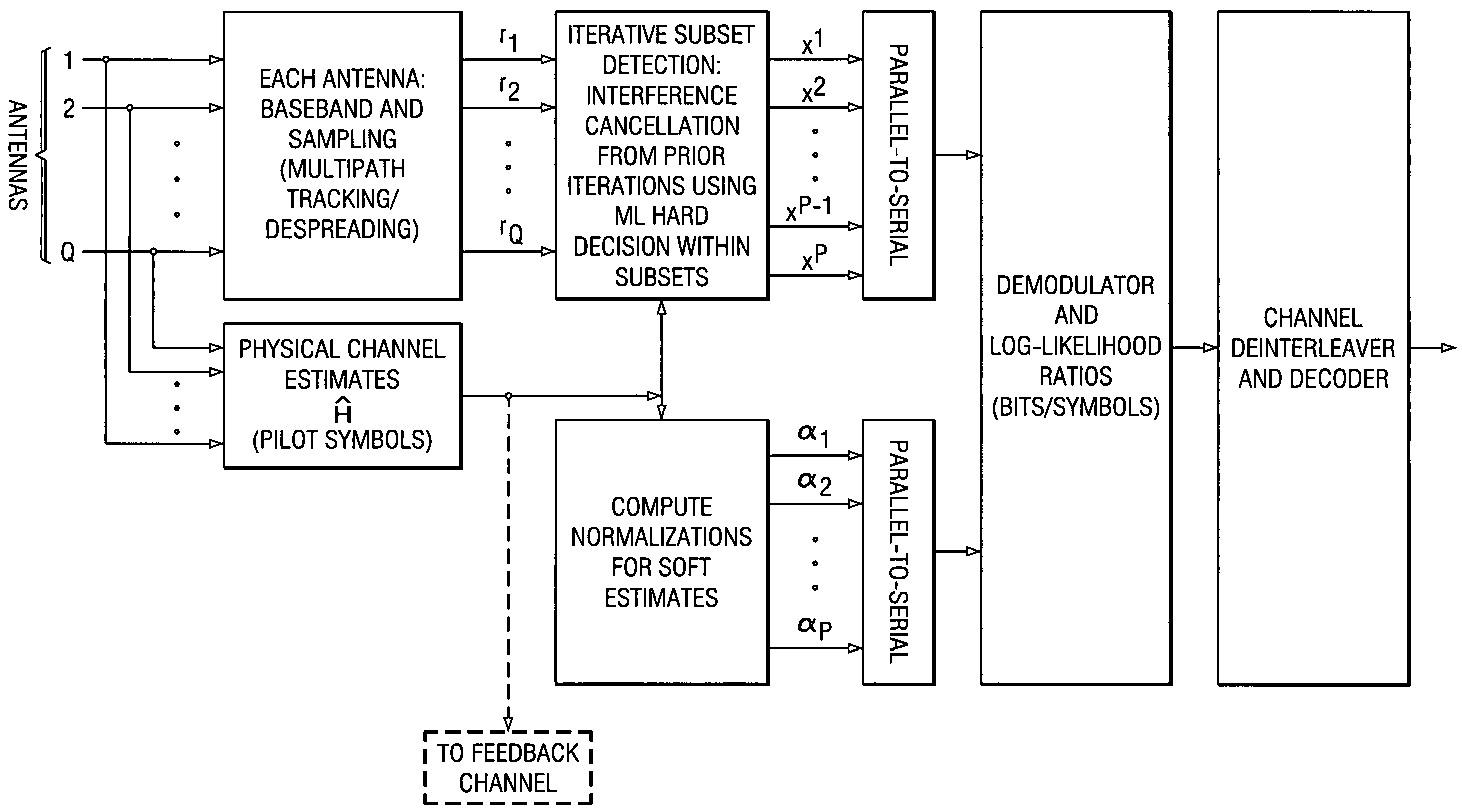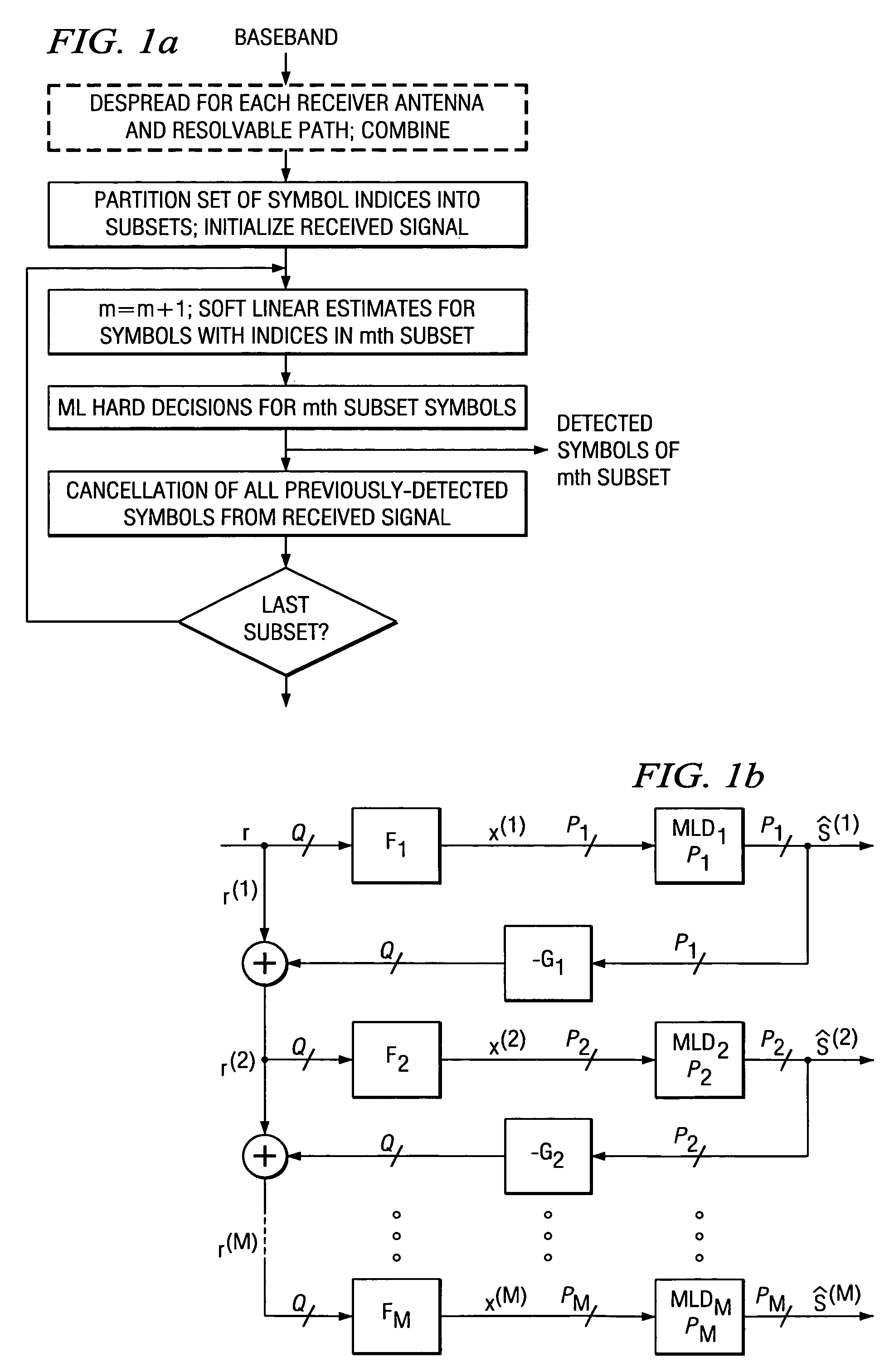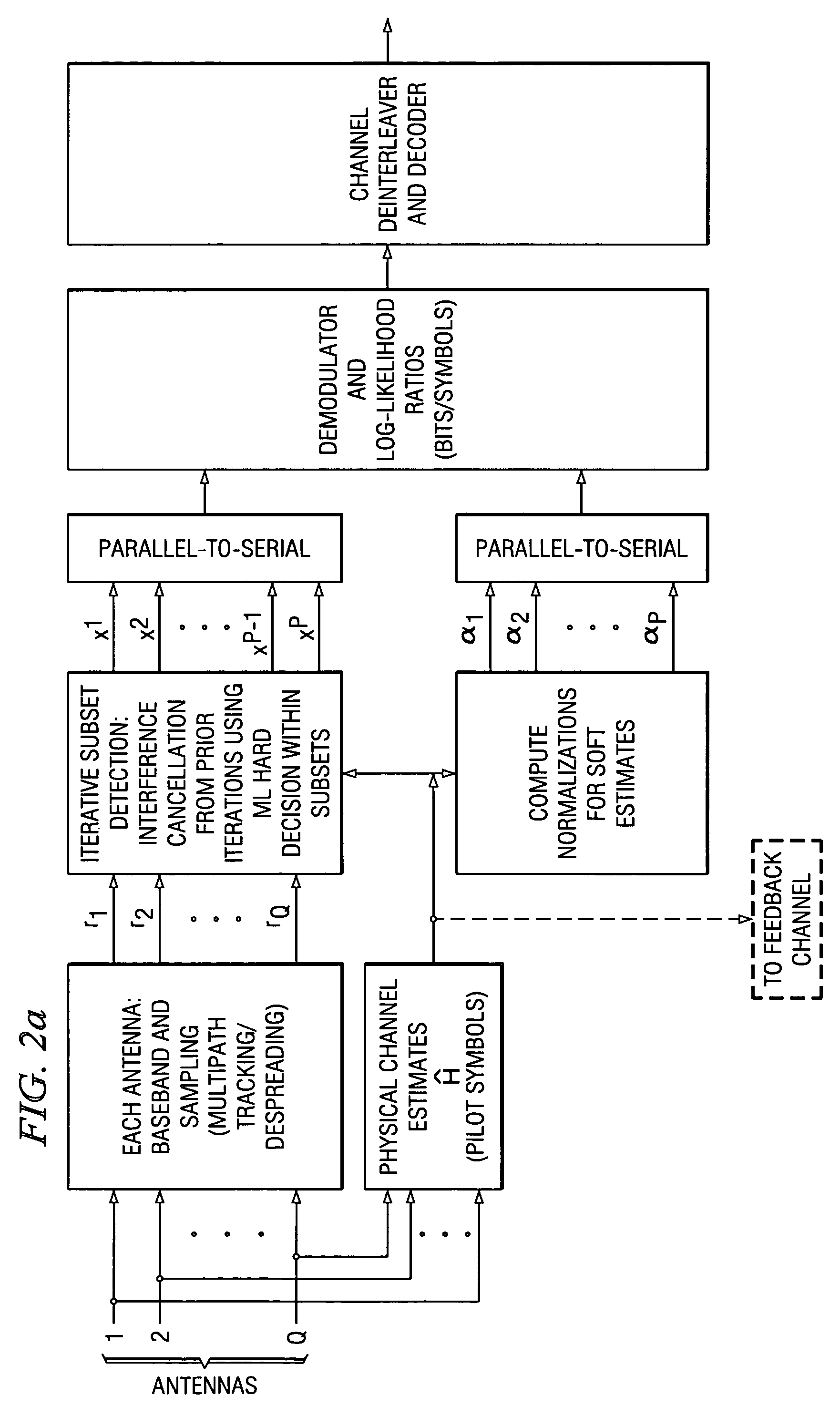Iterative detection in MIMO systems
a technology of mimo and detection system, applied in the field of communication system, can solve problems such as interference resistance detection, intersymbol interference and multi-user interference, and require interference-resistant detection, and achieve the effects of reducing the maximum likelihood decision, improving performance, and moderately increasing computational complexity
- Summary
- Abstract
- Description
- Claims
- Application Information
AI Technical Summary
Benefits of technology
Problems solved by technology
Method used
Image
Examples
Embodiment Construction
1. Overview
[0012]Preferred embodiment detectors and detection methods for multi-input, multi-output (MIMO) systems partition the set of transmitted symbols into subsets and jointly detect the symbols within a subset and iteratively detect the subsets. This provides interference cancellation of previously detected symbols. The joint detection within a subset may be a linear soft detection followed by maximum likelihood (ML) hard decision. FIG. 1a is a flow diagram, and FIG. 1b illustrates functional blocks of a preferred embodiment which partitions of a set of P symbol indices, {1, 2, . . . , P}, into M subsets, I1, I2, . . . , IM, of sizes P1, P2, . . . , Pm, respectively. Thus, P=Σ1≦m≦MPm. The hard estimates for the Pm symbols with indices in subset Im are computed by a Pm-input, Pm-output ML detector. These hard estimates are then used to regenerate the signal components associated with the symbols whose indices lie in Im, and the regenerated components from this iteration plus pr...
PUM
 Login to View More
Login to View More Abstract
Description
Claims
Application Information
 Login to View More
Login to View More - R&D
- Intellectual Property
- Life Sciences
- Materials
- Tech Scout
- Unparalleled Data Quality
- Higher Quality Content
- 60% Fewer Hallucinations
Browse by: Latest US Patents, China's latest patents, Technical Efficacy Thesaurus, Application Domain, Technology Topic, Popular Technical Reports.
© 2025 PatSnap. All rights reserved.Legal|Privacy policy|Modern Slavery Act Transparency Statement|Sitemap|About US| Contact US: help@patsnap.com



